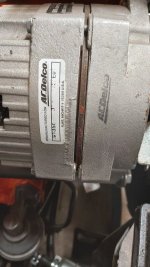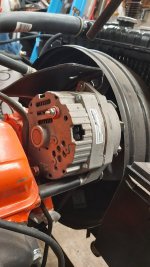I have a AC Delco 10SI Alternator, AMP unknown, that was purchased about 15 years ago and I can not remember if it is Internally or Externally Excited. 
Is there a way to tell which it is?
The numbers are somewhat worn out
At best, this is what I can find online:
Is there a way to tell which it is?
The numbers are somewhat worn out
At best, this is what I can find online:





